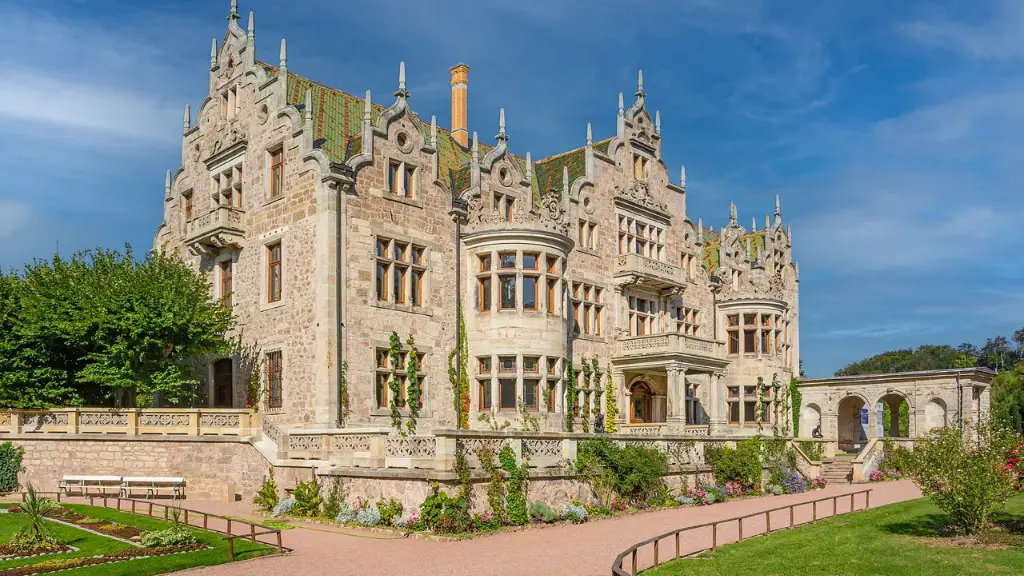What Is Architecture?
Architecture is the art, science, and practice of designing and constructing spaces that are functional, aesthetically pleasing, and have the capacity to evoke emotion. As an art form, architecture is the result of physical and mental effort, bringing together the elements of design and construction to create a structure which meets the needs of its residents. As a profession, architecture requires extensive knowledge of urban design, materials, building codes, and regulations, along with engineering and management skills.
What Major Do You Need For An Architecture Degree?
The major that you need to pursue in order to become an architect varies depending on the type of architecture you wish to specialize in, the specific school offering a program, and the degree you are looking to obtain. Generally speaking, a bachelor’s degree in architecture is the most common degree that is required for most entry-level positions, but most universities offering architecture programs also require higher-level degrees, such as a master’s degree or a doctorate.
The core curriculum for an architecture major typically includes courses such as architectural design, architectural history, building construction, structural engineering, and urban design. Additionally, courses in mathematics, geography, physics, and engineering can also be important for building a strong foundation for a career in architecture. Additionally, many architecture schools require additional coursework in the humanities such as art, philosophy, and literature.
Careers in Architecture
Architecture is a large and versatile field, so there are a variety of careers available to those with a degree in this field. Architects usually design and manage the construction of large projects, and may specialize in a particular area such as residential, commercial, public, and/or industrial structures.
Architects may also work with engineers and contractors on the construction of buildings, bridges, and other public works. And, they may serve as urban planners and designers, creating master plans for communities and public parks, or designing waterfronts, public transportation systems, and more.
Additionally, architects may find careers in conservation and sustainability, helping to create green spaces and other “green” building designs. In recent years, the demand for green architecture has increased as communities become more aware of their environmental impacts.
Required Qualifications
In addition to the specific degree that you pursue, there are other qualifications you need to become an architect. Generally, you must pass the Architect Registration Exam (ARE) and be licensed to practice architecture in most countries. Additionally, many states have specific requirements for licensure, such as continuing education and experience-based qualifications.
Soft Skills
Architecture is a highly collaborative profession, and requires strong communication and interpersonal skills. Architects must be able to collaborate with other professionals and clients, as well as being able to effectively communicate their designs in order to present them in a way that they can be properly understood.
Professionals in this field must also be able to think abstractly and create innovative designs based on their client’s needs and wants. Additionally, creativity and problem-solving skills are a must, as architects must be able to troubleshoot and come up with creative solutions to some of the complex challenges they may face.
Professionals Who Need Knowledge Of Architecture
While a career in architecture is often a desired route for many aspiring architects, there are other professionals who may benefit from a knowledge of architecture. Professionals such as interior designers, landscape architects, urban planners and city planners, may all benefit from a working knowledge of architecture, for their respective jobs and sectors of design.
Essential Tools For Architects
In addition to their creative minds, architects require a variety of tools to design and construct the projects they envision. 3D modeling software, such as Revit and AutoCAD, are essential for creating preliminary models, and are a must-have for all aspiring architects.
Other essential tools include surveying instruments to get an accurate understanding of the project space, pencils and sketching paper, scale rulers, and drafting supplies. Additionally, architects should also endeavor to stay up-to-date on the latest in building techniques, materials, and safety regulations, in order to ensure that the projects they design and construct are safe and up to code.
Salary and Job Outlook
According to the Bureau of Labor Statistics, the median pay for architects in the United States was $79,380 in 2017. Additionally, the number of jobs in this field is expected to grow by 7 percent over the next 10 years. This growth is due to the increased public demand for new and innovative design projects, as well as the push for more eco-friendly structures and designs.
Skills and Competences Needed
The competencies and skills needed to become an architect vary depending on the type of project, but generally, architects need technical, mathematical, and science skills, as well as excellent communication and organizational skills. The ability to think critically and creatively is essential, and architects must be able to work with a variety of teams and motivate people to work together to meet deadlines.
Job Challenges
Architecture, like any profession, has its unique challenges. Architects must often meet tight deadlines, manage complex projects, and manage teams of contractors, engineers, and other professionals. Additionally, architects must work with a variety of clients with different wants and needs, requiring considerable negotiation and diplomacy to make sure the project runs according to plan. Last but not least, architects need to make sure that their designs follow the safety regulations and building codes of the jurisdiction they are operating in.


